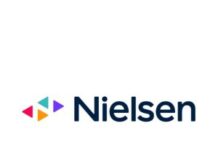
(By Alec Drake) Last week Radio Ink asked, “How Many Spots are Too Many Spots?” The comments from PDs were understandable; less is better. We can debate units Vs. time for stop sets; instead, the benchmark we should discuss is capacity. Capacity today is more like a balloon that can blow up or shrink based on how hard the revenue winds blow.
Capacity used to be relatively static in a format clock. Sometimes, we would make program changes due to moving to syndication from local content or accommodating play-by-play broadcasts with a revised capacity number. The big question is how much capacity is enough for sales to deliver on the revenue goals to service debt, cover costs to support the product, and create acceptable margins.
Better Yield Management Can Help Manage Capacity Abuse
1. Hidden Discounts: If you add capacity to hit a budget, you also protect inventory sold at a lower rate. Lower-priced inventory should be moved out of high-demand dayparts into other areas of the station based on the terms and conditions of the sale. When expanding capacity, you might also retain bonus inventory with no dollars attached to your long-term contracts.
2. Missed Pricing Opportunities: Following yield management processes helps you garner incremental revenues to hit a budget earlier in the sales period. What if you got $5 more for every unit you had already sold? Would you still need to add capacity? May should be Priced differently now based on seasonality; do not wait for inventory demand to drive rates.
3. Differentiated Inventory: Are you getting beachfront prices for your premium slots? The value of endorsements, for example, must be protected with price when you have inelastic demand conditions. Are you charging enough? Is there room to push the rate to reflect differentiated demand and boost overall station revenues?
4. Proactive Vs. Reactive: Adjusting capacity at the end of a sales cycle causes distractions and concerns in your sales department. Programming may comply under pressure from management but will be concerned about product impact. The traffic department must adjust clocks and logs to accommodate the expansion. Being more proactive with pricing adjustments will minimize missed budget goals that are forcing last-minute tactics.
5. The Market-Wide Infection: If one radio cluster adds inventory, it encourages others to consider the same tactic, softens overall demand, and adds competitive inventory. What do I mean by “competitive inventory”? The high-demand stations adding capacity push out inventory with a higher starting value than the overall market supply. Bottom-ranked stations are not adding units; instead, they are trying to sell their existing supply and conducting “fire sales. No one wins in the market when capacity expands.
6. The Listener Contract: There is an unwritten contract regarding commercial loads between the stations and their listeners. Your listeners can sense when you abuse your agreement on the balance between content and commercialism. We can all agree that the “Listener Contract” is more critical in today’s environment, and anything we can do to keep engagement is vital.
7. Attention Fragmentation: The audio space is overwhelmed with choices. Adding more interruption to our content by increasing capacity is heading in the wrong direction. The explosion of podcasts with low commercial loads and “ad-free” platforms are more attractive when we clutter our content with more messages.
Takeaway:
There are consequences for adding capacity ranging from hidden discounts to increased fragmentation of radio audiences. The improved utilization of OTA inventory to get deserved revenues and reach budgets requires a more substantial commitment to protect the product and improve pricing strategies. A more robust application of yield management tools with a proactive approach and thoughtful terms and conditions can create support for capacity management and place stations in a position to hit or exceed revenue goals.
Alec Drake, President of Drake Media Group, writes on revenue management and sales improvement strategies. You will find more of his articles in the “Sales Success Library” at Alecdrake.com. Alec is the founder of The Radio Invigoration Project (T.R.I.P.) LinkedIn group to benefit local radio sales, and can be reached at [email protected].





